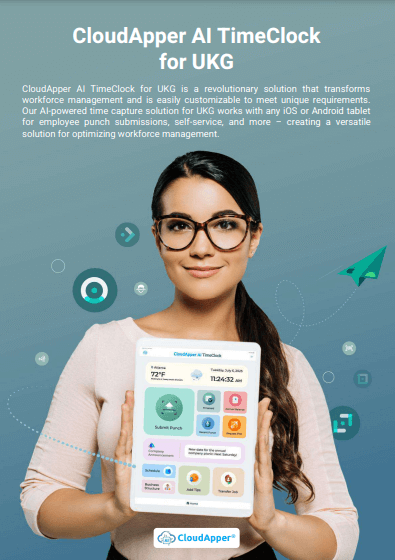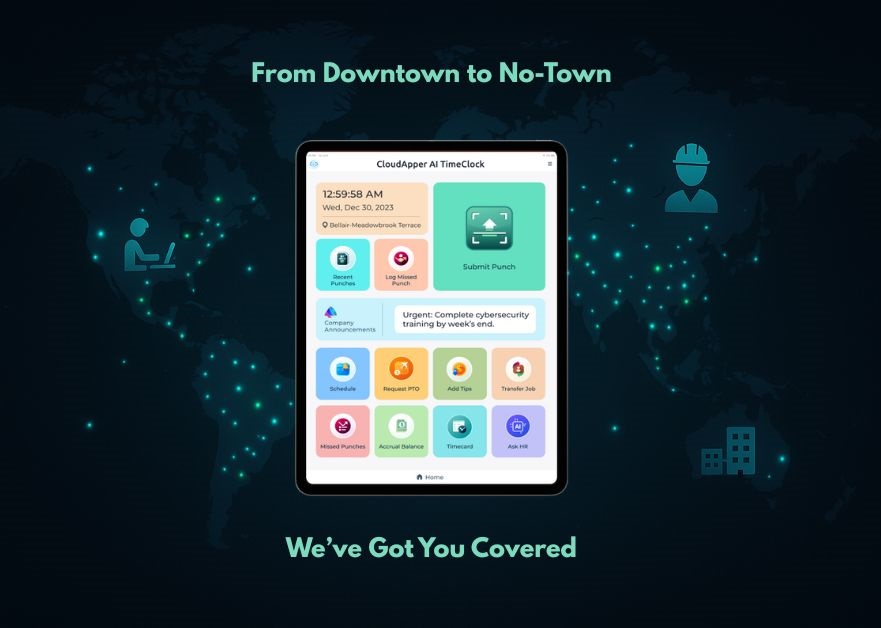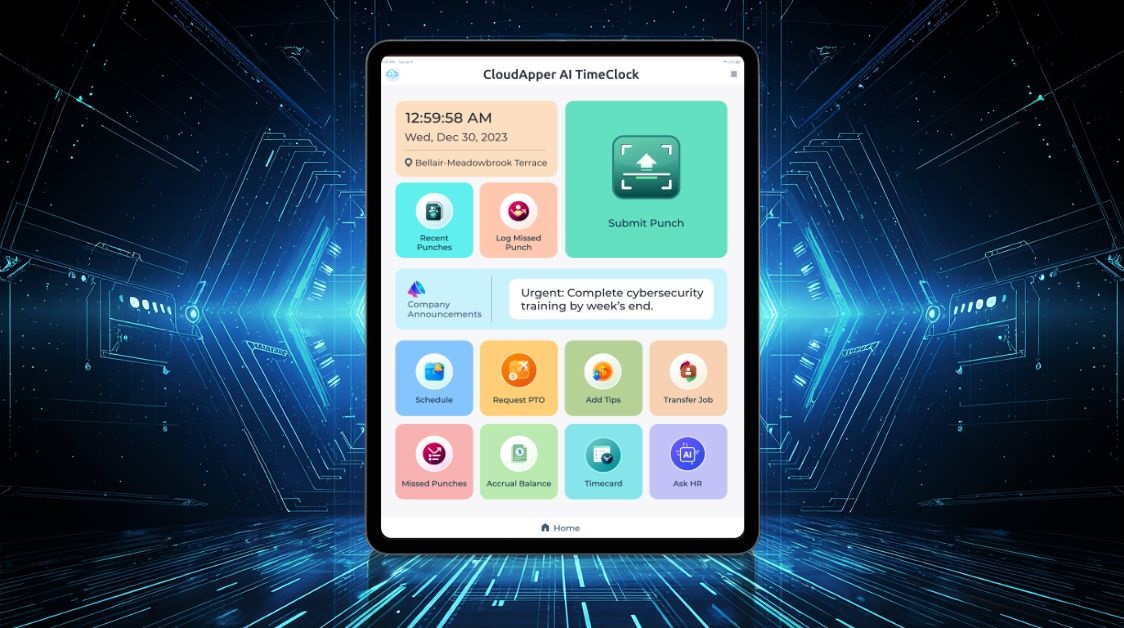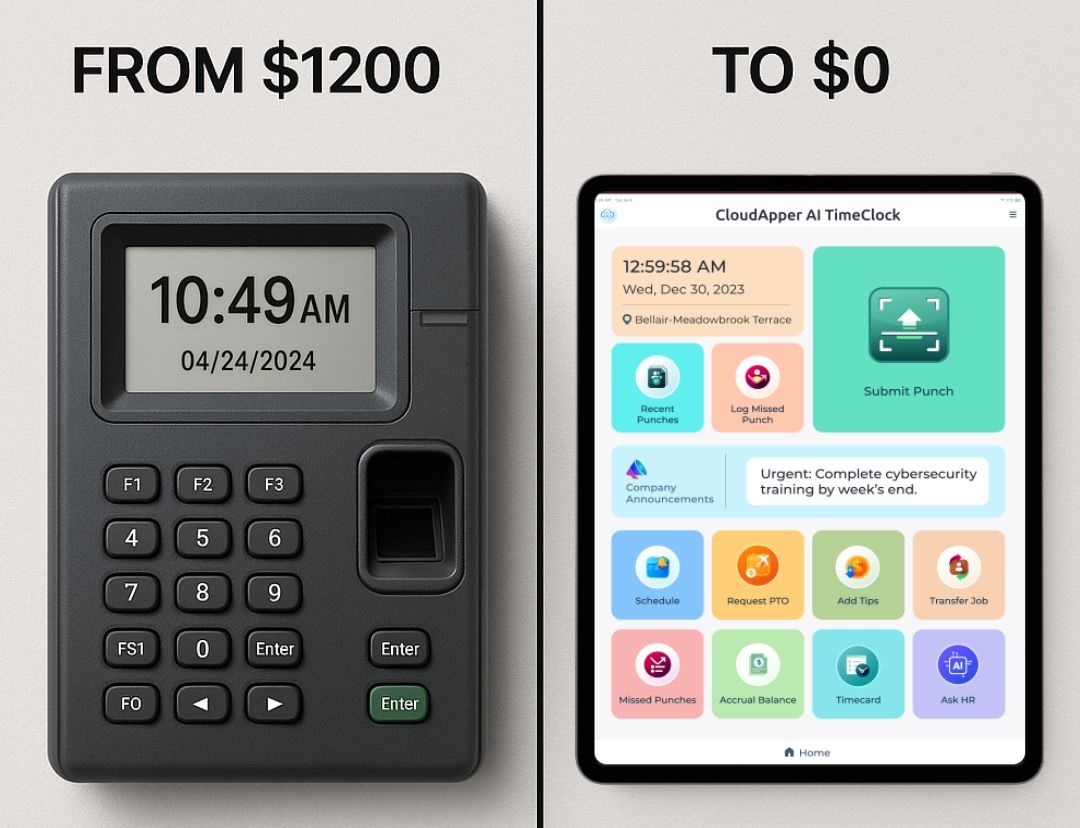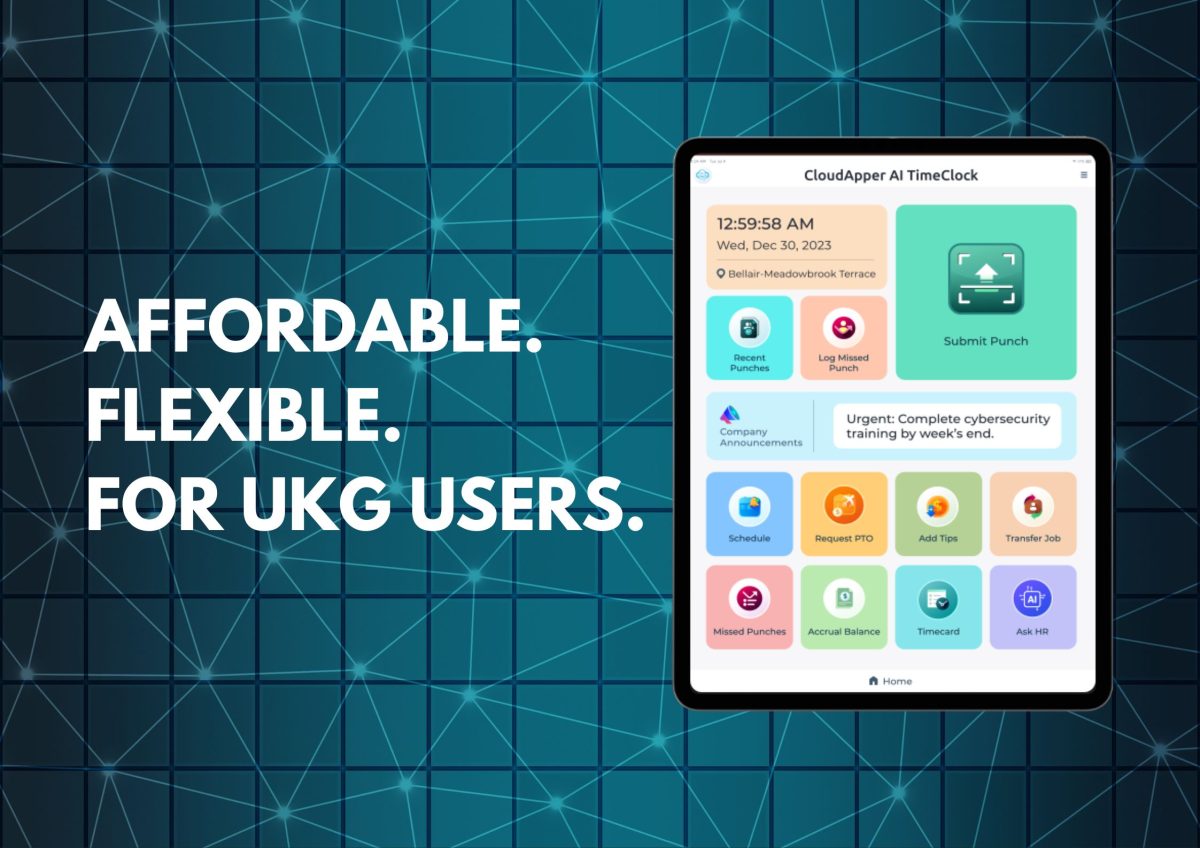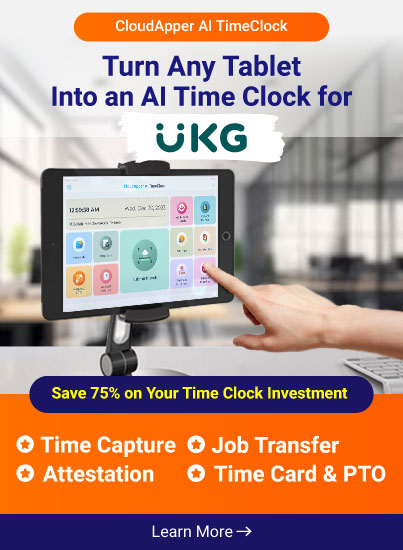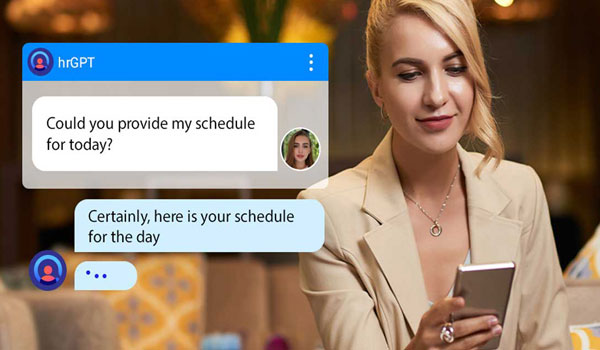CloudApper AI TimeClock for UKG simplifies time off request management, offering employees easy access to PTO policies, submission, accrual checking, and cancellation through a user-friendly interface. It enhances efficiency, reduces administrative burden, and improves employee satisfaction with customizable features for diverse business needs.
Table of Contents
In human resource management, handling time off requests efficiently is crucial for both operational efficiency and employee satisfaction. With the advent of CloudApper AI TimeClock for UKG, businesses have a powerful tool at their disposal that simplifies this process, making it more accessible and manageable for employees. In this article, we will discuss how employees can effectively manage their time off requests, from understanding company PTO policies to requesting, checking accruals, and canceling PTO—all through the CloudApper AI TimeClock interface.
For more information on CloudApper AI TimeClock for UKG visit our page here.
Understanding Your PTO Policy
Before diving into the functionalities of managing time off requests, employees must have a clear understanding of their company’s PTO policy. This foundational knowledge ensures that all requests are made within the organization’s guidelines and expectations. With the Company knowledge base, CloudApper AI TimeClock addresses this need through its HR AI assistant feature, which allows employees to inquire about and receive detailed explanations of PTO policies directly through the platform. This immediate access to policy details empowers employees to make informed decisions about their time off.
Requesting PTO from the TimeClock
Requesting time off has never been more straightforward. CloudApper AI TimeClock’s user-friendly interface allows employees to submit their PTO requests easily with just a few clicks. This process not only streamlines the submission of requests but also routes them efficiently to the appropriate managerial personnel for approval, ensuring a swift response. The system’s intuitive design minimizes the need for back-and-forth communication, thereby enhancing the overall efficiency of the request process.
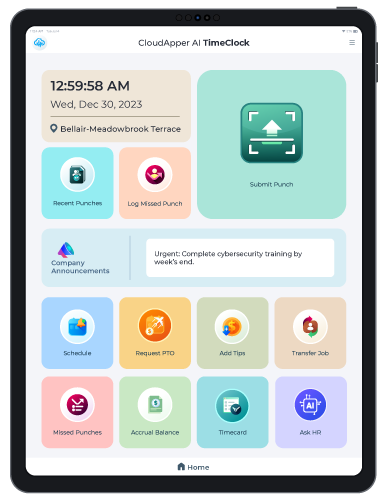
Checking Accruals from TimeClock
One of the key features of CloudApper AI TimeClock is its ability to provide employees with real-time access to their accrued time off. This transparency is essential for planning purposes, allowing employees to make PTO requests that align with their available balance. By offering a clear view of accruals, the platform ensures that employees can manage their time off more effectively, avoiding potential discrepancies and misunderstandings regarding available PTO.
Cancelling PTO Requests from TimeClock
Plans change, and so might the need for requested time off. CloudApper AI TimeClock accommodates this reality by offering a simple mechanism for canceling PTO requests. Employees can navigate the platform to withdraw their requests without hassle, whether due to a change in personal circumstances or a decision to postpone leave. This feature adds a layer of flexibility to time off management, acknowledging the dynamic nature of employees’ needs and schedules.
Benefits of CloudApper AI TimeClock
Cost-Effective Solution: CloudApper AI TimeClock presents a cost-effective solution for businesses, eliminating the need for extensive manual processing of time off requests and reducing the administrative burden on HR departments.
Customizability and Flexibility: Recognizing that no two businesses are the same, CloudApper AI TimeClock offers extensive customizability and flexibility, allowing the platform to be tailored to fit any organization’s specific needs and policies.
Enhanced Employee Experience: By simplifying the process of managing time off requests, CloudApper AI TimeClock significantly improves the employee experience. Its intuitive interface and immediate access to necessary information make it easier for employees to plan and take their deserved breaks, contributing to overall job satisfaction and well-being.
In conclusion, CloudApper AI TimeClock for UKG represents a significant advancement in the management of time off requests. Providing a comprehensive, easy-to-use platform that addresses everything from policy understanding to request submission and cancellation empowers employees while streamlining administrative processes for HR departments. The benefits of adopting such a system are clear: enhanced efficiency, improved employee satisfaction, and a more agile response to the dynamics of workforce management.





